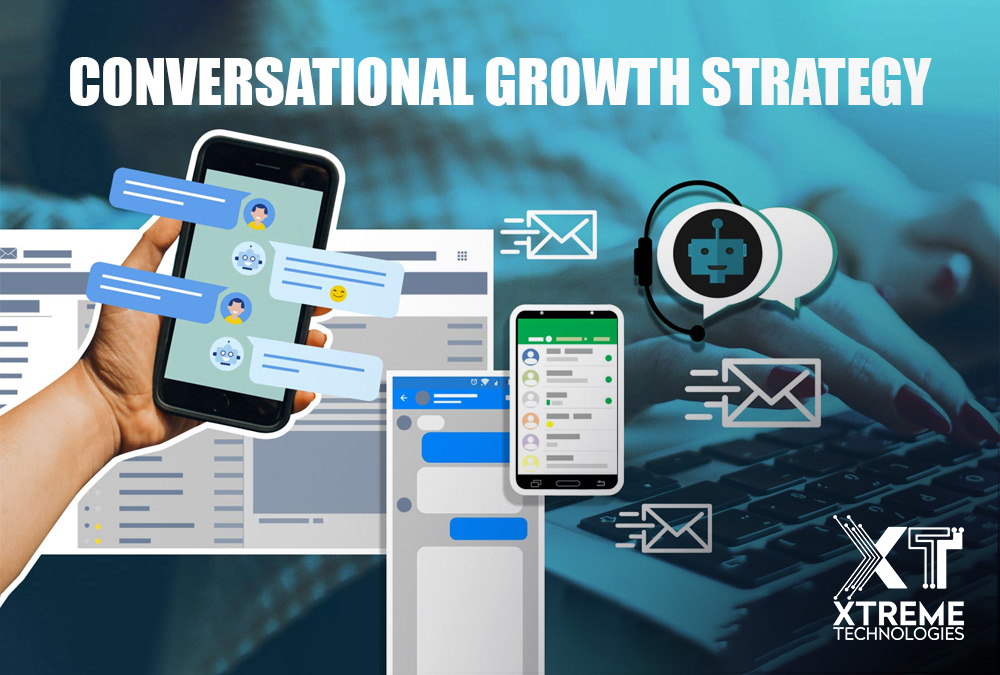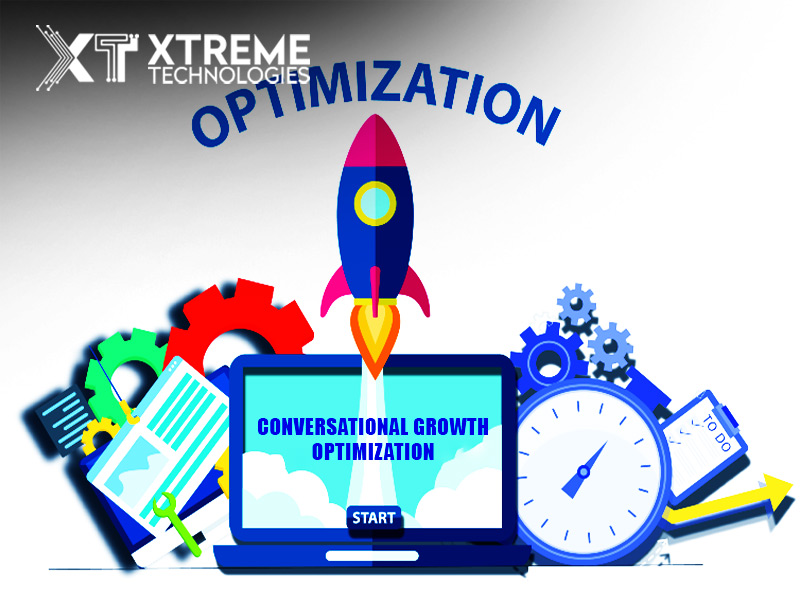
What Role Does Optimization Play In Your Conversational Growth Strategy
All, Branding, Business, Digital Marketing,
Published on: May 08, 2023
[tta_listen_btn] Optimization plays an important role in maximizing the conversational growth strategy's effectiveness. You can improve your conversational growth strategy by refining various elements to achieve better results, such as content, audience targeting, channels, conversion funnels, and customer experience. Conversational growth strategy is a crucial aspect of modern-day business. Marketers use conversational tools like chatbots, video calls, and live chats to engage readers in the sales process. In this blog post, we will explore the significance of optimization in conversational growth strategy and how it can contribute to business success. Let’s begin by understanding the buyer’s struggles in a typical B2B sales cycle which affects the optimization of conversational growth strategy.
Challenges in Conversational Growth Optimization
In the B2B (Business-to-Business) sales cycle, buyers often face unique challenges that can impact the effectiveness of a conversational growth strategy. Understanding and addressing these challenges help optimise the sales process and improve overall conversational growth outcomes. Let's take a closer look at some of the common challenges faced by buyers in a B2B sales cycle:
Let's take a closer look at some of the common challenges faced by buyers in a B2B sales cycle:
1. Complex Decision-Making Process
B2B buying decisions are typically complex and involve multiple stakeholders with varying roles, interests, and priorities. This can result in a longer sales cycle as buyers navigate through internal decision-making processes, gain consensus among different stakeholders, and overcome internal hurdles.2. Information Overload
B2B buyers are inundated with a vast amount of information from various sources, such as vendor websites, industry reports, whitepapers, and social media. The challenge for buyers is to sift through the information clutter and identify the most relevant and trustworthy sources to make informed decisions.3. Budget Constraints
B2B purchases often involve substantial investments, and buyers are mindful of their budget constraints. They may need to justify the purchase to their internal stakeholders and ensure that the investment aligns with their organization's financial goals and priorities.4. Risk Management
B2B buyers are risk-averse and cautious about making business decisions that may impact their organization's reputation, finances, and operations. They may require detailed information on product/service features, security, compliance, and performance to mitigate potential risks and make informed decisions.5. Customization and Integration Requirements
B2B buyers often have unique business requirements and may seek customization or integration of products/services into their existing systems or processes. This can pose a challenge for vendors to meet these specific requirements while ensuring seamless integration and minimal disruption to the buyer's operations.6. Vendor Selection
B2B buyers face the challenge of identifying and selecting the right vendor from a wide array of options in the market. They may need to evaluate factors such as vendor reputation, expertise, customer references, pricing, and contractual terms to make an informed decision.Best Practices in Addressing B2B Sales Cycle Challenges
Here are some best practices to consider to optimize conversational growth strategy in the B2B sales cycle.
1. Deep Understanding of Buyers
Gain a thorough understanding of your target buyers, their pain points, motivations, and decision-making processes either through organic or PPC marketing. This will help tailor your conversational approach and provide relevant information and solutions that address their specific challenges.2. Personalization and Customization
Offer personalized and customized experiences to buyers, showcasing how your products/services can meet their unique requirements. Provide relevant and timely information, case studies, testimonials, and demonstrations highlighting your offerings' value and ROI. Put the relevant information in front of the ready-to-buy audience through local SEO.3. Clear and Comprehensive Information
Provide clear, concise, and comprehensive information about your products/services, addressing common questions, concerns, and potential risks. Offer detailed documentation, product/service specifications, and performance data that help buyers make informed decisions.4. ROI and Value Proposition
Clearly articulate the ROI and value proposition of your products/services, demonstrating how they can solve specific business challenges, improve efficiency, and drive results. Provide data, case studies, and success stories that highlight the tangible benefits of choosing your offerings.5. Collaboration and Support
Offer collaborative and supportive engagement throughout the sales cycle, addressing buyers' concerns, providing timely responses, and facilitating smooth communication among different stakeholders. Offer post-sales support, training, and onboarding to ensure a successful implementation of your products/services.6. Trust and Credibility
Build trust and credibility by establishing a strong online presence, and showcasing customer testimonials, industry awards, certifications, and partnerships. Provide transparent pricing, contract terms, and service level agreements that instill confidence in buyers' minds. To implement above stated best optimization practices, it is important to understand the various types of optimization to improve the conversational growth strategy of a business.Understanding Optimization
Optimization here means analysing and making data-driven decisions to optimize different aspects of a conversational growth strategy, including content, audience targeting, channels, conversion funnels, and customer experience. The goal of optimization is to maximize the effectiveness of the conversational growth strategy by enhancing reach, engagement, conversion rates, and overall customer experience.
You can improve your conversational strategy by optimizing your messaging in the following 4 areas.
The goal of optimization is to maximize the effectiveness of the conversational growth strategy by enhancing reach, engagement, conversion rates, and overall customer experience.
You can improve your conversational strategy by optimizing your messaging in the following 4 areas.
1. Content Optimization
Content optimization is the process of refining the content used in a conversational growth strategy. This can be done by optimizing your messaging, tone, style, and format of the content to resonate with the target audience. It also includes optimizing keywords, tags, and meta descriptions used in the content to improve search engine rankings and increase visibility. Content optimization aims to ensure that the content is relevant, engaging, and valuable to the audience, which helps in driving more meaningful conversations and interactions.2. Audience Optimization
Audience optimization focuses on identifying and targeting the right audience for a conversational growth strategy. This includes analyzing and segmenting the target audience based on demographics, interests, behaviors, and preferences. By understanding the characteristics of the target audience, businesses can optimize their conversational growth strategy to deliver personalized and relevant experiences that resonate with the audience. Audience optimization also includes continuous monitoring and analysis of audience data to refine the targeting and ensure that the conversational growth strategy reaches the right people at the right time.3. Channel Optimization
Channel optimization involves identifying and optimizing the channels used in a conversational growth strategy to engage with the target audience. This includes analysing the performance of different channels, such as social media, email, chatbots, and other messaging platforms, to determine which channels are driving the most engagement and conversions. Channel optimization also involves optimizing the messaging, timing, and frequency of the communications on different channels to ensure that they are aligned with the preferences and behaviors of the target audience.4. Conversion Optimization
Conversion optimization focuses on optimizing the conversion funnel to drive more conversions from the conversational growth strategy. Do this by analysing and optimizing each stage of the conversion funnel, from the initial engagement to the final conversion action. Conversion optimization involves identifying and addressing any barriers or friction points in the conversion funnel, such as complex forms, lengthy processes, or unclear calls to action. By optimizing the conversion funnel, businesses can increase the likelihood of converting conversations into tangible outcomes, such as leads, sales, or other desired actions. Optimization is essential for achieving business goals, improving brand awareness, and driving long-term growth. It is imperative for businesses to implement optimization as an ongoing process and continuously adapt to changing customer needs and preferences.As conversational marketing continues to evolve, optimizing conversational growth strategies will be vital for businesses to stay competitive and succeed in the future. Implement optimization in your conversational growth strategy today to unlock its full potential for your small business's branding success.
Read Also: What feature is required to track customer search terms on a website?






Recent Comments